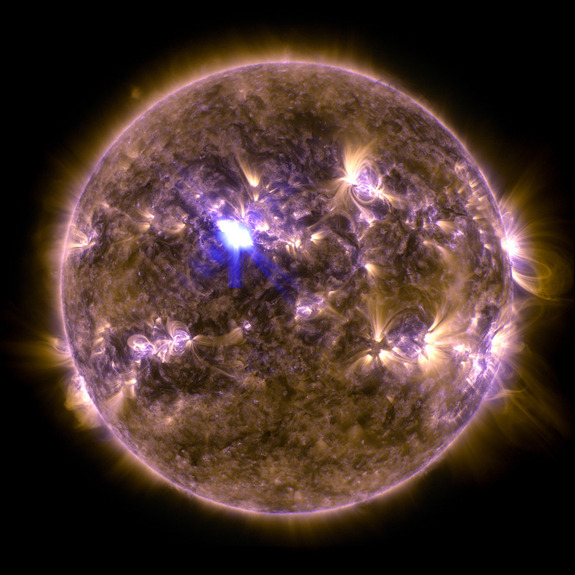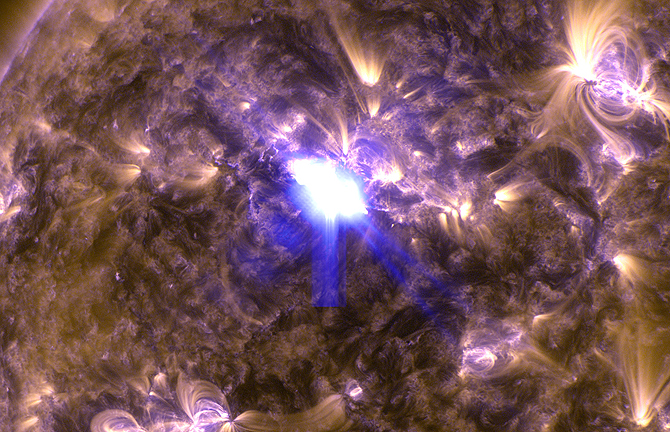Sun Unleashes Biggest Solar Flare of the Year Yet

The most powerful solar flare of the year erupted from the sun today (April 11) sparking a temporary radio blackout on Earth, NASA officials say.
The solar flare occurred at 3:16 a.m. EDT (0716 GMT) and registered as a M6.5-class sun storm, a relatively mid-level flare on the scale of solar tempests. It coincided with an eruption of super-hot solar plasma known as a coronal mass ejection.
"This is the strongest flare seen so far in 2013," NASA spokeswoman Karen Fox explained in a statement. "Increased numbers of flares are quite common at the moment, since the sun's normal 11-year cycle is ramping up toward solar maximum, which is expected in late 2013."
NASA's sun-watching Solar Dynamics Observatory recorded a stunning video of the strongest solar flare of 2013, showing it extreme detail. The spacecraft is one of several space-based observatories keeping track of the sun's solar weather events.
NASA officials dubbed today's solar flare as a "spring fling" for the sun, which has been relatively calm as it heads into its peak activity period.
Today's M-class solar flare was about 10 times weaker than X-class flares, which are the strongest flares the sun can unleash. M-class solar flares are the weakest solar events that can still trigger space weather effects near Earth, such as communications interruptions or spectacular northern lights displays.
The solar flare triggered a short-lived radio communications blackout on Earth that registered as an R2 event (on a scale of R1 to R5), according to space weather scales maintained NOAA, Fox added.
Get the world’s most fascinating discoveries delivered straight to your inbox.
When aimed directly at Earth, major solar flares and coronal mass ejections can pose a threat to astronauts and satellites in orbit. They can interfere with GPS navigation and communications satellite signals in space, as well as impair power systems infrastructure on Earth.
Fox said NASA officials are tracking the coronal mass ejection to see if it poses any space weather concerns for Earth. Meanwhile, the Solar Dynamics Observatory and other space observatories will continue to monitor the sun's activity.
"Humans have tracked this solar cycle continuously since it was discovered, and it is normal for there to be many flares a day during the sun's peak activity," Fox explained.
Editor's note: If you snap an amazing photo of the northern lights in the night sky from today's solar flare and you'd like to share for a possible story or image gallery, please send images and comments, including location information, to managing editor Tariq Malik at spacephotos@space.com.
This story was provided by SPACE.com, sister site to Live Science. Email Tariq Malik at tmalik@space.com or follow him @tariqjmalik and Google+. Follow us @Spacedotcom, Facebook and Google+. Original article on SPACE.com.

Tariq is the editor-in-chief of Live Science's sister site Space.com. He joined the team in 2001 as a staff writer, and later editor, focusing on human spaceflight, exploration and space science. Before joining Space.com, Tariq was a staff reporter for The Los Angeles Times, covering education and city beats in La Habra, Fullerton and Huntington Beach. He is also an Eagle Scout (yes, he has the Space Exploration merit badge) and went to Space Camp four times. He has journalism degrees from the University of Southern California and New York University.




